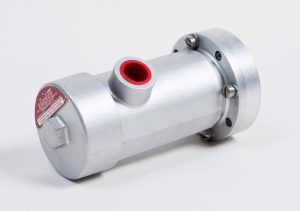Finest Practices for Maintenance and Applications in the Aluminum Factory Field: A Comprehensive Summary
Keeping devices in the light weight aluminum factory sector is vital for operational success. Regular examinations and predictive maintenance can substantially lower downtime and improve security. Advanced innovations, such as IoT and information analytics, play a critical function in this process. However, understanding the complete scope of finest techniques needs a better examination of certain strategies and their influence on efficiency. What are the crucial elements that add to a trusted upkeep framework?
Importance of Routine Upkeep in Light Weight Aluminum Foundries
Routine upkeep plays an essential duty in the reliable procedure of aluminum shops. By methodically inspecting and servicing tools, shops assure peak efficiency and long life of machinery. Normal upkeep tasks, such as lubrication, cleansing, and element substitute, aid stop unforeseen breakdowns that can bring about expensive downtime.
Moreover, routine checks boost work environment security by recognizing possible risks before they escalate into serious problems. Devices that is well-kept operates better, leading to improved item high quality and lowered waste. Additionally, adherence to a structured maintenance timetable can sustain conformity with market policies, thereby cultivating a credibility for integrity and top quality within the marketplace.
Applying Anticipating Maintenance Approaches
Predictive upkeep strategies take the concepts of regular maintenance a step even more by leveraging information analytics and progressed tracking innovations. In aluminum shops, these approaches enable drivers to expect devices failures prior to they take place, thus decreasing unintended downtimes and enhancing functional effectiveness. By utilizing sensors and IoT tools, real-time information can be gathered on machine performance, allowing for the recognition of potential concerns via anticipating analytics.
Maximizing Melting and Putting Processes
Effective melting and pouring processes are crucial for optimizing performance and guaranteeing the top quality of light weight aluminum castings. To enhance these processes, shops need to focus on exact temperature control throughout melting, as this straight affects the metallurgical properties of the alloy. Utilizing innovative melting innovations, such as induction and resistance melting, can improve power performance and reduce cycle times.
In addition, carrying out automated pouring systems decreases human error and keeps uniformity in the putting procedure. Appropriate mold prep work, consisting of adequate preheating, is necessary to prevent thermal shock and enhance mold and mildew long life.

Enhancing Safety Procedures in Foundry Procedures
Prioritizing security in light weight aluminum foundry procedures is important for protecting employees and assuring an efficient setting. Effective safety protocols consist of routine training sessions that emphasize the significance of individual safety equipment (PPE), such as gloves, goggles, and headgears. In addition, the establishment of clear emergency situation treatments is essential in taking care of possible accidents.
Routine inspections of equipment and machinery assistance determine risks prior to they rise into major problems. Executing a robust coverage system encourages workers to communicate safety worries without fear of effect. Promoting a culture of safety guarantees that every staff member understands their role in keeping a protected work environment.
Furthermore, assuring appropriate air flow and tracking air quality can mitigate exposure to hazardous fumes and dust. By reinforcing these techniques, aluminum foundries can considerably lower the danger of mishaps and develop a setting where workers really feel valued and risk-free, eventually enhancing overall operational effectiveness.
Leveraging Innovation for Improved Effectiveness
Utilizing sophisticated technology has actually become increasingly crucial for aluminum factories aiming to improve operational effectiveness. Automation and robotics play an important duty in simplifying production procedures, minimizing labor costs, and lessening human mistake. Carrying out real-time surveillance systems enables the constant analysis of equipment performance, making it possible for aggressive maintenance and minimizing downtime.
The combination of information analytics gives important understandings right into operational operations, helping with better decision-making and source appropriation. Predictive analytics can identify possible failings prior to they take place, additional maximizing upkeep routines.
Additionally, adopting innovative melting and spreading technologies improves energy efficiency and product return, which are essential for sustainability in the industry. By embracing these technological innovations, aluminum foundries can not just enhance efficiency but additionally preserve an one-upmanship in a significantly demanding market (Casting Foundry). Ultimately, leveraging innovation is critical in driving advancement and enhancing general functional effectiveness within the field

Frequently Asked Inquiries
What Prevail Indications of Equipment Use in Light Weight Aluminum Foundries?
Typical indicators of equipment wear in aluminum factories include uncommon sounds, decreased effectiveness, increased vibration, overheating parts, leaks, and noticeable deterioration. These indications typically signify the need for upkeep or possible substitute to stay clear of costly downtime.
Exactly How Can I Train Team for Effective Upkeep Practices?
To educate staff for efficient upkeep practices, one can implement hands-on workshops, establish detailed guidebooks, urge mentorship programs, and aluminum foundry carry out routine analyses to assess skills and understanding, making certain all employees recognize upkeep protocols extensively.
What Are the Environmental Regulations for Light Weight Aluminum Foundries?
Light weight aluminum factories are subject to various environmental regulations, including emissions control, waste administration, and source preservation. Compliance warranties marginal ecological influence, advertising sustainability while sticking to regional, nationwide, and worldwide environmental standards and policies.
Exactly How Do Factories Handle Waste and Recycling of Light weight aluminum?
Shops manage waste and recycling by carrying out systems for gathering scrap aluminum, utilizing advanced splitting up modern technologies, and teaming up with reusing centers to guarantee reliable recovery processes, therefore lessening environmental impact and advertising sustainability within the market.
What Are the Costs Related To Executing Advanced Technologies?
Executing innovative innovations in foundries sustains considerable costs, including first investment, training, and upkeep costs. The long-term advantages, such as boosted efficiency and lowered waste, usually validate these expenses, leading to enhanced profitability. (aluminum foundry)
